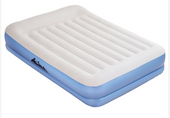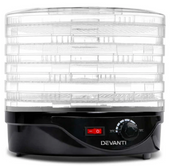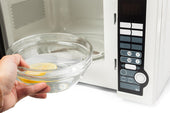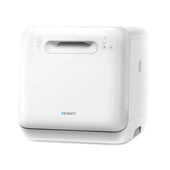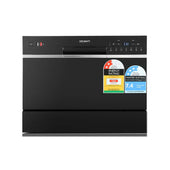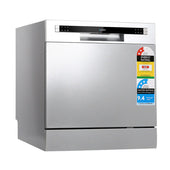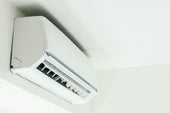Understanding the Importance of a Clean Toilet
Maintaining a clean toilet is essential for health, hygiene, and comfort. A dirty toilet can become a breeding ground for harmful bacteria, germs, and viruses, increasing the risk of illnesses such as diarrhoea, urinary tract infections, and respiratory issues. Furthermore, unpleasant odours often stem from lingering bacteria and accumulated waste, creating an unwelcoming environment.
During days of regular use, a clean toilet promotes mental wellbeing by enhancing the overall atmosphere of a living space. Proper upkeep also extends the lifespan of fixtures by preventing the build-up of hard water stains, limescale, and rust. Consistent cleaning and use of quality cleaning agents foster a hygienic, odour-free, and visually appealing bathroom environment.
Essential Supplies for Toilet Cleaning
Maintaining a clean and odour-free toilet requires having the right supplies on hand. These items ensure effective cleaning and help prevent the buildup of germs and unpleasant odours.
Cleaning Tools
- Toilet Brush: A sturdy brush with firm bristles is essential for scrubbing stains and hard-to-reach areas.
- Microfibre Cloths: Ideal for wiping surfaces and preventing scratches.
- Rubber Gloves: Protects hands from harsh chemicals and bacteria.
Cleaning Solutions
- Toilet Cleaner: A specialised formula to remove stains, kill germs, and maintain hygiene.
- White Vinegar and Baking Soda: Effective natural alternatives for tackling tough stains.
- Disinfectant Spray or Wipes: Ensures surfaces like the flush handle and seat remain sanitised.
With these supplies, efficient toilet cleaning becomes manageable.
Daily Habits to Maintain a Spotless Toilet
- Flush Thoroughly: Always ensure to flush the toilet completely to prevent stains, mineral deposits, or residue from building up over time.
- Wipe Surfaces Regularly: Use a disinfectant wipe or a soft cloth with a mild cleaner to sanitise the toilet seat, lid, and handle daily.
- Brush Immediately After Use: Keep a toilet brush nearby and quickly scrub the bowl if stains or residues appear after flushing.
- Check for Spills: Inspect and clean any splashes or spills around the base and floor to maintain hygiene and reduce odours.
- Use Air Fresheners: Add a natural air freshener or deodoriser to keep the space smelling pleasant. Always allow adequate ventilation.
Weekly Deep Cleaning Routine for Your Toilet
A weekly deep cleaning routine is crucial for maintaining a hygienic, odour-free toilet. This process not only eliminates germs but also prevents stubborn stains from setting in. Follow these steps to ensure a thorough cleanse:
- Remove Surface Dust and Debris Start by wiping down external surfaces, including the cistern, lid, and base, using a microfiber cloth.
- Apply a Toilet-Specific Cleaner Use a disinfectant or specialised toilet cleaner, applying it generously under the rim and throughout the bowl.
- Scrub Thoroughly Scrub the interior using a toilet brush, paying close attention to hidden areas such as under the rim.
- Disinfect Handles and Touchpoints Use antibacterial wipes or spray to sanitise the flush handle and seat hinges.
- Rinse and Dry Flush to rinse the bowl, then dry external surfaces with a clean, dry cloth for a polished finish.
How to Combat Stubborn Stains Effectively
Stubborn stains in the toilet can be both unsightly and a breeding ground for bacteria if not addressed properly. Regular maintenance coupled with specialised techniques helps keep these stains at bay. Start by using a pumice stone or a non-abrasive scrubber to gently remove mineral deposits like limescale without damaging the porcelain surface. Apply a toilet bowl cleaner containing hydrochloric acid or natural acids, such as vinegar, to dissolve tough buildup.
For rust stains, using a paste of bicarbonate of soda and a few drops of lemon juice can prove effective. Allow the paste to sit for 10–15 minutes before scrubbing. When dealing with organic stains, an enzyme-based cleaner is highly efficient, as it breaks down organic matter. Rinse thoroughly after any treatment to prevent residue build-up.
Ensure the room is ventilated during cleaning to avoid inhaling any chemicals. Wear gloves for protection, and always read product labels. Consistency is crucial—address stains promptly and implement a monthly deep-cleaning routine to minimise their recurrence.
Dealing with Limescale and Hard Water Build-Up
Limescale and hard water deposits can make toilets appear dirty despite regular cleaning. To address these issues, the use of specialised descaling cleaners is essential. Acidic solutions, such as white vinegar or commercial products containing citric acid, effectively dissolve mineral deposits when applied to the affected surfaces. For stubborn build-up, allowing the solution to sit for an extended period, typically overnight, maximises results. Scrubbing with a non-abrasive toilet brush or pumice stone ensures thorough removal. Preventative measures include installing a water softener or using in-tank descaling tablets. Regular maintenance is key to keeping surfaces smooth, clean, and free from discolouration caused by mineral accumulation.
Preventing Toilet Odours: Simple Strategies
To maintain a fresh-smelling toilet, employing proactive measures is essential. Regular cleaning should include the bowl, seat, and surrounding areas. Using disinfectants and toilet cleaners helps eliminate odour-causing bacteria.
Ventilation plays a critical role in odour prevention. Installing an exhaust fan or opening windows allows airflow, reducing moisture and discouraging odour build-up. Adding air fresheners or odour-neutralising sprays can provide an extra layer of freshness.
For natural solutions, baking soda or white vinegar can be used. Sprinkling baking soda in the bowl or pouring vinegar down the drain combats lingering smells effectively.
Maintaining unclogged drains and flushing waste promptly ensure unpleasant odours don’t linger.
Natural and Eco-Friendly Cleaning Alternatives
Utilising natural and eco-friendly cleaning solutions can effectively maintain a clean and odour-free toilet while reducing environmental impact. Common household items such as vinegar and baking soda provide powerful cleaning properties. A mixture of white vinegar and water can be used as a spray to dissolve limescale and clean surfaces without harsh chemicals. Baking soda, when sprinkled on toilet bowls, can act as a gentle abrasive to remove stains. Lemon juice can help combat bacteria and provide a fresh scent. These alternatives are cost-effective, non-toxic, and safe for septic systems while delivering efficient cleaning results.
Maintenance Tips to Keep Your Toilet Fresh
- Regular Cleaning: Ensure the toilet bowl, seat, and surrounding areas are cleaned at least once a week using an appropriate disinfectant. This helps prevent the build-up of grime and bacteria.
- Use Toilet Cleaners: Apply a specialised toilet cleaner to maintain freshness and eliminate odours. Allow the product to sit for a few minutes before scrubbing with a toilet brush.
- Ventilate the Bathroom: Proper ventilation prevents humidity, which can trap odours. Open windows or use an exhaust fan to promote airflow.
- Inspect for Leaks: Check the toilet for leaks, as moisture can lead to mildew and odour. Promptly repair faulty plumbing.
- Add Air Fresheners: Install a bathroom-friendly air freshener or use odour-neutralising sprays for a lasting fresh scent.
Prolonging Toilet Hygiene Between Cleans
Maintaining toilet hygiene between deep cleans involves simple yet effective strategies. Regular use of toilet cleaning tablets can prevent the build-up of stains and keep the bowl fresh. Encouraging household members to close the toilet lid before flushing minimises the dispersal of germs and bacteria into the air.
For ongoing freshness, place moisture-absorbing sachets or air fresheners in the bathroom. Keep a toilet brush next to the toilet and rinse it with disinfectant after use to ensure hygiene. Establishing a habit of wiping down the seat and handle daily with antibacterial wipes can further enhance cleanliness and reduce germs.










